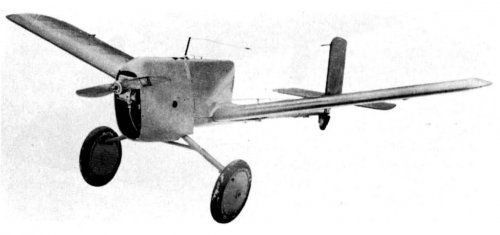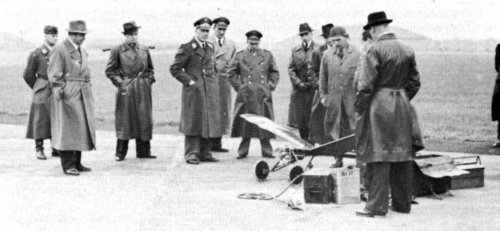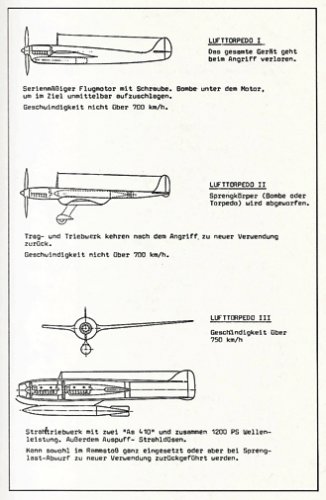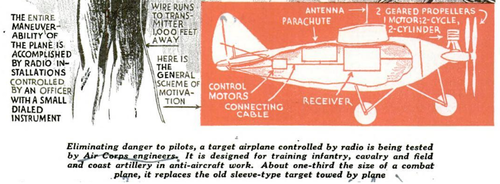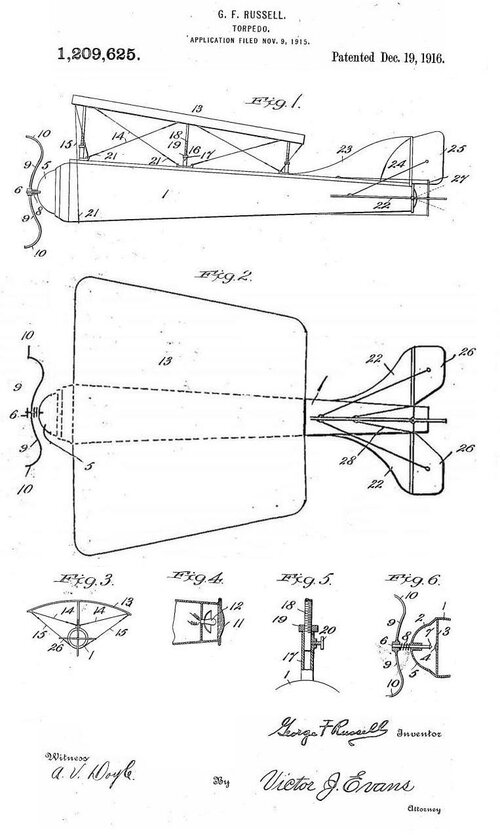You are using an out of date browser. It may not display this or other websites correctly.
You should upgrade or use an alternative browser.
You should upgrade or use an alternative browser.
Early UAV
- Thread starter Maveric
- Start date
- Joined
- 11 March 2006
- Messages
- 8,632
- Reaction score
- 3,482
Just ask wiki ! 
Aerial target, called "„Flakzielgerät 43“ (AAA target 1943) and recce, then with the
name "Fernfeuer" (distant fire), that could imply a use by the artillery, although, as it
was just taking photos, that had to be processed after landing, target aquisition would
have been quite a lengthy affair.
Aerial target, called "„Flakzielgerät 43“ (AAA target 1943) and recce, then with the
name "Fernfeuer" (distant fire), that could imply a use by the artillery, although, as it
was just taking photos, that had to be processed after landing, target aquisition would
have been quite a lengthy affair.
- Joined
- 26 May 2006
- Messages
- 33,561
- Reaction score
- 13,685
Jemiba said:Just ask wiki !
Aerial target, called "„Flakzielgerät 43“ (AAA target 1943) and recce, then with the
name "Fernfeuer" (distant fire), that could imply a use by the artillery, although, as it
was just taking photos, that had to be processed after landing, target aquisition would
have been quite a lengthy affair.
My dear Jemiba,
here is a artist drawing to Argus Fernfeuer.
V-1 Flying Bomb 1942-1952
Attachments
- Joined
- 9 October 2009
- Messages
- 21,147
- Reaction score
- 12,248
Jemiba said:Just ask wiki !
Aerial target, called "„Flakzielgerät 43“ (AAA target 1943) and recce, then with the
name "Fernfeuer" (distant fire), that could imply a use by the artillery, although, as it
was just taking photos, that had to be processed after landing, target aquisition would
have been quite a lengthy affair.
Photos might not have been the only way it could have provided information on enemy positions. If it was rigged with the right sensors say perhaps modified target scoring gear of the day, along the means of transmitting the data generated, it may have been possible (at least in theory) to calculate the rough positions of concentrations of enemy forces based on the density of fire the Flakzielgerät 43 was taking along with the general direction/s the incoming fire was originating from. Of course the Flakzielgerät 43 would have to have armor and/or redundancy in critical areas in order to survive long enough to gather enough data to let the artillery rip, not to mention any hope of getting back with nice clear pictures of enemy positions & movements.
Just a thought.
- Joined
- 26 May 2006
- Messages
- 33,561
- Reaction score
- 13,685
Was that Air Corps Target Plane of 1940 a real Project or not ?.

Popular Mechanics
Popular Mechanics inspires, instructs and influences readers to help them master the modern world. Whether it’s practical DIY home-improvement tips, gadgets and digital technology, information on the newest cars or the latest breakthroughs in science -- PM is the ultimate guide to our high-tech...
books.google.com.eg
Attachments
Airborne2001
ACCESS: Confidential
- Joined
- 19 June 2020
- Messages
- 164
- Reaction score
- 167
Interstate TDR-1

Performance:
General characteristics
The Interstate TDR-1 was a drone aircraft used by the United States Army and Navy Air Forces during the Second World War. The drone would be controlled by TBM Avengers during missions. The aircraft took part in the first ever drone strike in history against Japanese forces in the Solomon's. On September 27th, 1944, four drones went after a Japanese gun position in Bougainville. While three did not make it, one did, and it crashed directly into the gun position. While the mission itself was not too much of a success, it still was the first drone strike in history. The program was cancelled in October of that year due to continued difficulties with developing and using the drones.
Sources:

 en.wikipedia.org
en.wikipedia.org

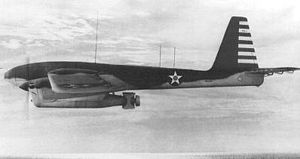
Performance:
General characteristics
- Crew: 0–1 (optional pilot)
- Wingspan: 48 ft (15 m)
- Gross weight: 5,900 lb (2,676 kg)
- Powerplant: 2 × Lycoming O-435-2 opposed piston engines, 220 hp (160 kW) each
- Cruise speed: 140 mph (230 km/h, 120 kn)
- Range: 425 mi (684 km, 369 nmi)
- One 1,000-pound (910 kg) bomb or one aerial torpedo
The Interstate TDR-1 was a drone aircraft used by the United States Army and Navy Air Forces during the Second World War. The drone would be controlled by TBM Avengers during missions. The aircraft took part in the first ever drone strike in history against Japanese forces in the Solomon's. On September 27th, 1944, four drones went after a Japanese gun position in Bougainville. While three did not make it, one did, and it crashed directly into the gun position. While the mission itself was not too much of a success, it still was the first drone strike in history. The program was cancelled in October of that year due to continued difficulties with developing and using the drones.
Sources:

Interstate TDR - Wikipedia

- Joined
- 26 May 2006
- Messages
- 33,561
- Reaction score
- 13,685
A flying Torpedo from Mr. G. A. Crocco.
Attachments
- Joined
- 26 May 2006
- Messages
- 33,561
- Reaction score
- 13,685
Hi,
here is a flying torpedo,from Mr. George F. Russell.
here is a flying torpedo,from Mr. George F. Russell.
Attachments
- Joined
- 25 July 2007
- Messages
- 4,167
- Reaction score
- 3,833
What was Maniche-Bersagli T-33 target towed ?.
An AMI RT-33 fitted out for target towing ( or traino bersagli ). Maniche e bersagli translates as 'sleeves and targets'.
klem
I really should change my personal text
- Joined
- 7 March 2015
- Messages
- 706
- Reaction score
- 1,529
G.F. Russell. Patent and a press article published in the newspaper "San Jose Mercury-news October 14, 1915". - (https://cdnc.ucr.edu/?a=d&d=SJMN191...NOVEL+AMERICAN+ENGINE+OF+DESTRUCTION.-------1)
Attachments
- Joined
- 26 May 2006
- Messages
- 33,561
- Reaction score
- 13,685
What was Maniche-Bersagli T-33 target towed ?.
An AMI RT-33 fitted out for target towing ( or traino bersagli ). Maniche e bersagli translates as 'sleeves and targets'.
Thank you Apophenia,
and in which year ?.
tom!
ACCESS: Confidential
Hi.
Sorry for the blurry pics. All were enlarged from thumbnail-size original pics...
Japanese Kugisho MXY3 aerial target glider from I think 1939 ( Kugisho is short for Koku Gijutsu-Sho = Naval Air-Technical Arsenal in Yokosuka, also known under the designation "Yokosuka", Designation abbrevation was "Y"):

Small glider with large high wings. It was designed to be used as aircraft target during the early phase of advanced training. Carried by an E7K Seaplane and flown by the spotter of the carying airplane via a special radiowave command module. There was no preparation made to land the drone after use, so it was a disposable article.

E7K1 ready for starting the MXY3

Same aircraft on the ground with the MXY3 already installed.
Japanese Kugisho MXY4 powered aerial target drone designed 1940:
The MXY 4 was the enlarged successor of the MXY3 glider drone with various improvments. It was designed with low wings, two floats to be able to land it on sea, a modified empenage and, most important, a small 35 HP radial engine. With these modifications the drone was able to fly more complex maneuvers, the flying time was highly increased for a better training and it could be reused if salvaged after landing. It was operated the same way as the MXY3. Below is the only pic of this UAV I was able to find in several years.

E7K2 seaplane with a MXY4 ready to or directly after start.
Yours
tom!
Sorry for the blurry pics. All were enlarged from thumbnail-size original pics...
Japanese Kugisho MXY3 aerial target glider from I think 1939 ( Kugisho is short for Koku Gijutsu-Sho = Naval Air-Technical Arsenal in Yokosuka, also known under the designation "Yokosuka", Designation abbrevation was "Y"):

Small glider with large high wings. It was designed to be used as aircraft target during the early phase of advanced training. Carried by an E7K Seaplane and flown by the spotter of the carying airplane via a special radiowave command module. There was no preparation made to land the drone after use, so it was a disposable article.
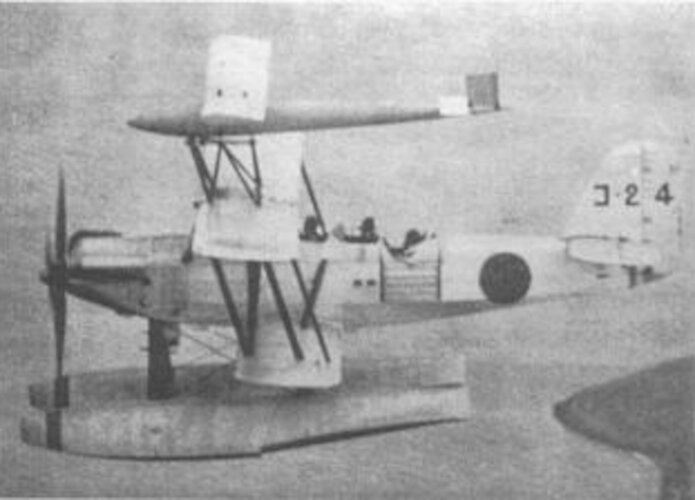
E7K1 ready for starting the MXY3
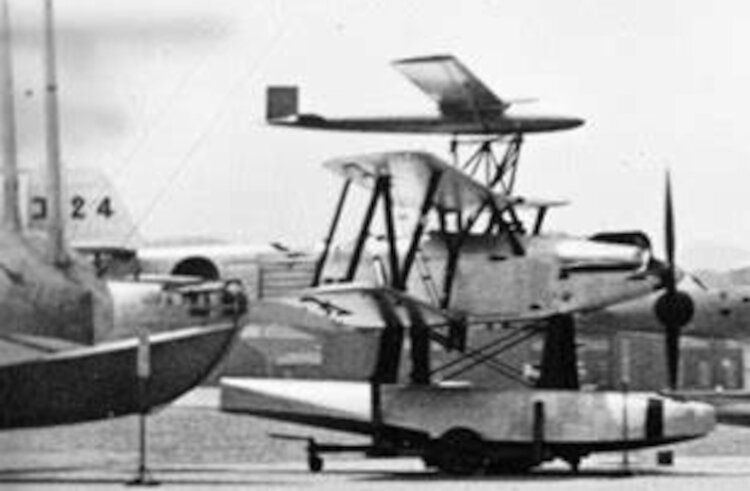
Same aircraft on the ground with the MXY3 already installed.
Japanese Kugisho MXY4 powered aerial target drone designed 1940:
The MXY 4 was the enlarged successor of the MXY3 glider drone with various improvments. It was designed with low wings, two floats to be able to land it on sea, a modified empenage and, most important, a small 35 HP radial engine. With these modifications the drone was able to fly more complex maneuvers, the flying time was highly increased for a better training and it could be reused if salvaged after landing. It was operated the same way as the MXY3. Below is the only pic of this UAV I was able to find in several years.
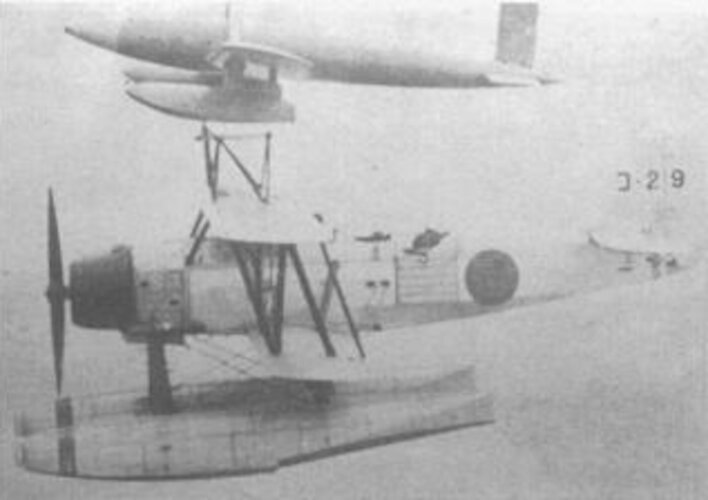
E7K2 seaplane with a MXY4 ready to or directly after start.
Yours
tom!
- Joined
- 25 July 2007
- Messages
- 4,167
- Reaction score
- 3,833
and in which year ?.
Circa 1965. Once the new Fiat G.91s entered Aeronautica Militare service, AMI T-33As and R-33As were freed up for traino manica (sleeve-towing). Along with target-towing, the AMI T-33s themselves also acted as as radar targets for fighters - in what the Italians called 'lepre' (hare) operations.
- Joined
- 26 May 2006
- Messages
- 33,561
- Reaction score
- 13,685
The link is broken,and I can't read the entries,please,who can do this ?,and thanks.
- Joined
- 6 November 2010
- Messages
- 4,636
- Reaction score
- 4,125
@hesham I copied your link, deleted the part following ...rf.gd/ , then opened the underlying folders.
Last edited:
- Joined
- 26 May 2006
- Messages
- 33,561
- Reaction score
- 13,685
Many great thanks to you,my dear Arjen,and here is the translate;
On 9 September 1939, the Argus company presented a flying torpedo to the Reichsluftfahrtministerium (RLM) as part of the 'Argus Fernfeuer' project. The proposal of this lufttorpedo contained 3 variants. The versions 1 and 2 were propeller driven by a piston engine that could develop 500 hp at 5000 meters altitude. These craft could carry a load of 1 ton at a cruising speed of 700 km/h and had a range of 1000 km. Version 3 had a turbojet engine powered by two As 411 engines (modified As 410) which together at 3300 rpm would deliver 1184 hp, giving the turbojet engine a thrust of 150 kg. The 3000 kg aircraft would reach a speed of 750 km/h. The Argus 410/411 were V12/60 degree air-cooled lightweight engines built inverted: top crankshaft and pendant pistons. The steering of the 3 versions was designed by the Arado company and operated via an accompanying aircraft. Design 1 was intended to explode the torpedo along with the payload on the target. The second type would send the 'luft torpedo' above its target, release the 1000 kg explosive charge and radio-controlled the torpedo back to base. The type 3 could be crashed together with the cargo or the bomb could be released and the 'lufttorpedo' returned to base. In May 1940 the RLM got other priorities and stopped the project. However, the Argus company decided to continue the development of a flying bomb with a different power source as propulsion
Similar threads
-
Multi-seat fighters: "cruiser fighters" and "battleplanes"
- Started by Avimimus
- Replies: 103
-
"Sitting Ducks and Peeping Toms" - Targets, Drones and UAVs (Air-Britain)
- Started by phil gollin
- Replies: 1
-
Projects of the German Secret Flight Test Center at Lipetsk, USSR 1924-1933
- Started by Dynoman
- Replies: 37
-
WRaymond Phillips’ Wireless-Controlled, Remotely-Piloted Bomber Airships.
- Started by Wingknut
- Replies: 5
-
Christopher AG-1 and Timm AG-2 assault gliders
- Started by Stargazer
- Replies: 4

